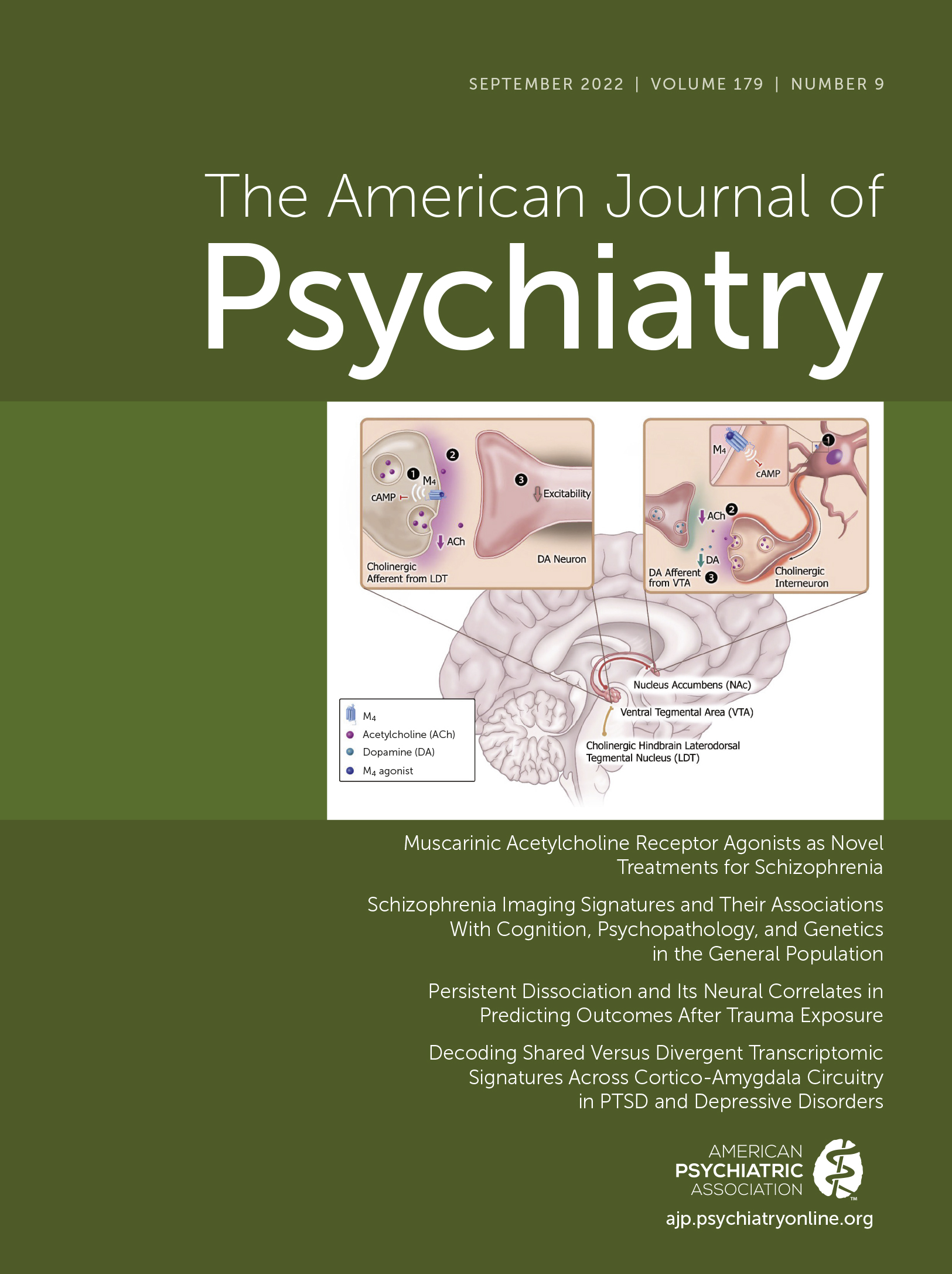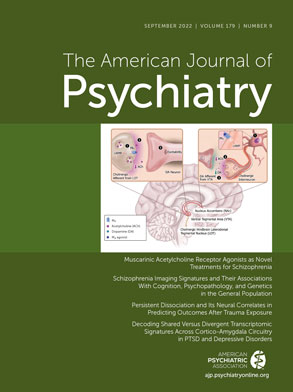Clinicians and researchers in psychiatry have long sought to identify specific variables that predict important constructs related to clinical care, such as response to treatment, the course of a disorder, and the risk of developing a disorder. Indeed, interest in such predictors has grown as the field has moved toward precision psychiatry (
1–
3). The benefits of prediction are clear; for example, the ability to predict response to a particular treatment would help to expedite the amelioration of symptoms by bypassing the often slow trial-and-error process of finding an effective treatment. In addition, the ability to predict risk for a disorder would help identify individuals who might benefit from interventions that prevent or decrease the severity of a disorder (
4). In this issue of the
Journal, Lebois et al. (
5) used clinical and biological measures to predict the severity of posttraumatic stress disorder (PTSD) symptoms and other psychiatric outcomes following exposure to a traumatic event.
Variables that are known to indicate heightened risk for PTSD include sex/gender, history of previous trauma, family or personal history of psychopathology, and peritraumatic dissociation (
6–
9). In addition, researchers have started to examine neuroimaging variables that may likewise indicate risk for PTSD, such as hippocampal volume or activation of the amygdala or medial prefrontal cortex (
10–
14). Because the majority of people who are exposed to trauma do not develop PTSD, studies of predictors of PTSD benefit from having large samples of trauma-exposed participants. Given its inclusion of both clinical and neuroimaging variables and its relatively large sample size, the Lebois et al. study is an important investigation of the predictors of PTSD symptoms following trauma. Adding to the novelty of the study, these researchers decided to investigate a specific subtype of dissociation that may predict subsequent PTSD symptoms—persistent derealization, which is marked by feeling that one’s surroundings seem strange or unreal and/or that one is looking through a fog so that people or things seem far away or unclear.
Lebois and colleagues examined whether self-reported persistent derealization and its neural correlates, measured shortly after a traumatic event, can predict PTSD symptom severity and other clinical outcomes 3 months after the trauma. The authors analyzed data from the AURORA study (
15), which included individuals who had visited an emergency department in the United States following a traumatic event such as a motor vehicle collision or a physical assault. In the Lebois et al. study, participants provided ratings of persistent derealization (N=1,464) and underwent functional MRI (fMRI) scanning (N=145) approximately 2 weeks after the traumatic event. Three months after the trauma, participants completed assessments of their psychiatric symptoms, pain, and level of impairment. The authors found that at 2 weeks posttrauma, persistent derealization severity was positively correlated with ventromedial prefrontal cortex (vmPFC) activation in response to fearful versus neutral facial expressions, even after controlling for potential confounders. Most importantly, in separate regression analyses, both persistent derealization severity and vmPFC activation positively predicted PTSD symptom severity 3 months posttrauma, even after controlling for age, sex, childhood maltreatment severity, and 2-week PTSD symptom severity. These findings suggest that assessing self-reported persistent derealization or vmPFC activation shortly after trauma exposure could be helpful in predicting PTSD symptoms later.
Readers may wonder which of these two variables is the better predictor of PTSD symptoms. Although the variables’ relative predictive strength was not assessed within a single regression, presumably because they were correlated with each other, the regression that included persistent derealization did explain a greater proportion of the variance in PTSD symptoms than did the regression that included vmPFC activation. Many readers will argue, compellingly, that when it comes to predicting PTSD symptoms, administering a two-item self-report measure of persistent derealization is far more efficient, cost-effective, and inclusive than conducting a specialized and expensive fMRI scan that is unlikely to be available to everyone. Why, then, should we even consider neuroimaging variables as predictors of PTSD symptoms? One potential benefit of doing so is to identify possible brain regions or circuits that may be viable targets for intervention. For example, the results of this and other studies suggest that the vmPFC is a reasonable target for transcranial magnetic stimulation (TMS) or its variants (e.g., intermittent theta burst stimulation [iTBS]). Even if the vmPFC itself is too ventral to target directly with TMS, functional connectivity analyses conducted in individual patients can reveal cortical regions that are tightly functionally correlated (or anticorrelated) with the vmPFC but are more dorsal and hence more easily reached with TMS. In short, the vmPFC can be reached at least indirectly by TMS or iTBS, and this personalized approach has been used successfully to treat depression (
16).
The findings of Lebois and colleagues are certainly exciting for their potential clinical relevance and contributions to neurocircuitry models of PTSD. Nevertheless, they also need to be replicated in a large, independent sample in order to more thoroughly assess the prediction accuracy of the variables studied (
1). In addition, it will be helpful to know whether other types of dissociation and activation in other subregions of the vmPFC similarly predict outcome. Finally, in order to better understand the origins of these predictors of PTSD symptoms, it will be important for future studies to determine whether persistent derealization and exaggerated vmPFC activation are trait-like vulnerability factors that are present even
before trauma exposure, which could be helpful in identifying potential candidates for primary prevention efforts.

